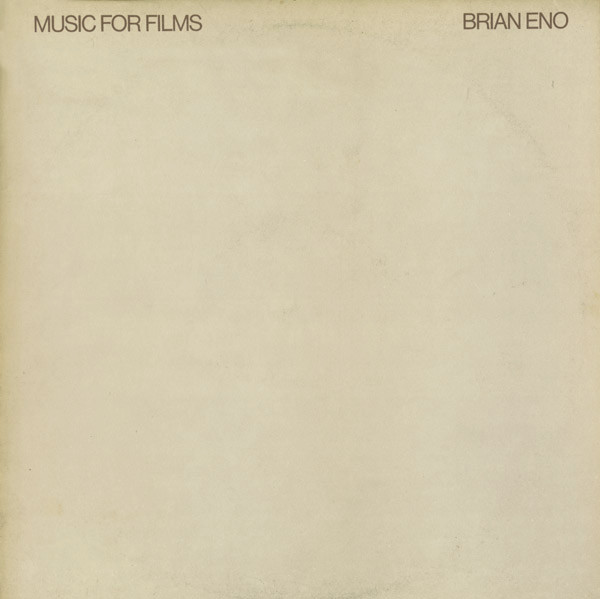An altered sequence was eventually released as an actual album with the same title, in a cover as stark as its mood. Many of the tracks are understated hums, with only a hint of melody. Most are performed by Eno alone, but some have contribution from such regulars as John Cale, Phil Collins and Percy Jones, suggesting that these could have been some of the alleged hundred or so ideas started for Before And After Science, or even some of the less developed ideas from Another Green World.
Much of the album is truly background music, to be half-ignored while something else commands your attention, but a few tracks stand out. “From The Same Hill” throws some guitar and melody into the mix. Robert Fripp is credited on “Slow Water” but we’ll be damned if we can pick him out. “Strange Light” is a nice finale in line with his work with Cluster before the more eerie and obvious “Final Sunset”. The three back-to-back versions of “Sparrowfall” provide a glimpse into his writing process, starting with a basic theme, introducing a counterpoint, and then culminating in a complete combined mini-symphony. Such moments, when they arrive, enliven a less-than-riveting listening experience. (A sequel called Music For Films Vol. 2 got a low-key release in 1983; much of this set consisted of prototypes that would be expanded on an album with his new collaborator Daniel Lanois. Many of these strays were conveniently reissued in the 21st century, along with various refugees from the original 1976 “director’s cut” of the first volume, on a disc called More Music For Films.)
 Music For Airports, and not just by comparison, is a triumph. Here Eno starts with simple melodic ideas and repeats them, with only the slightest variation, making for a soothing yet hypnotic listening experience. This was his first album to be dubbed “ambient”, and it set the tone for others who wanted to follow in the same new genre.
Music For Airports, and not just by comparison, is a triumph. Here Eno starts with simple melodic ideas and repeats them, with only the slightest variation, making for a soothing yet hypnotic listening experience. This was his first album to be dubbed “ambient”, and it set the tone for others who wanted to follow in the same new genre.
In this case, the music is almost pointedly subliminal, with the titles coming from their placement on the vinyl. “1/1” follows a simple descending major-key melody on the piano around until its resolution and repeated choruses, amid some synthesized counterpoints. It’s the longest track on the album, and arguably the most successful. The remainder of side one is taken up by vocal tracks faded in and out as on 10cc’s “I’m Not In Love”, albeit “played” here around a wistful minor key.
That idea is extended on the first track on side two. “1/2” supports the “vocals” with a piano accompaniment that sounds like two different hands following each other around the same minor scale. The result brings the idea to a similar fruition as “Sparrowfall”. The final piece includes neither acoustic piano nor voice, but rather some intertwining synth lines that occasionally resemble strings. It’s a long finale, but peaceful.
Music For Airports may or may not have been used in actual airports, but it certainly couldn’t hurt trying it today. It has, however, paved the way for lots of imitators three-plus decades on. (The album’s twentieth anniversary was celebrated by a live recording of the album performed on orchestral instruments by the avant-garde New York ensemble Bang On A Can All-Stars, bringing a human element to the project.)
Brian Eno Music For Films (1978)—3
Brian Eno Ambient 1: Music For Airports (1978)—4
Brian Eno More Music For Films (2005)—3

Ambient 1 was played as part of a multimedia exhibit at Laguardia airport's Marine Air Terminal. The video used was a series of photos of the W.R. Grace building dissolving slowly into one another.
ReplyDelete